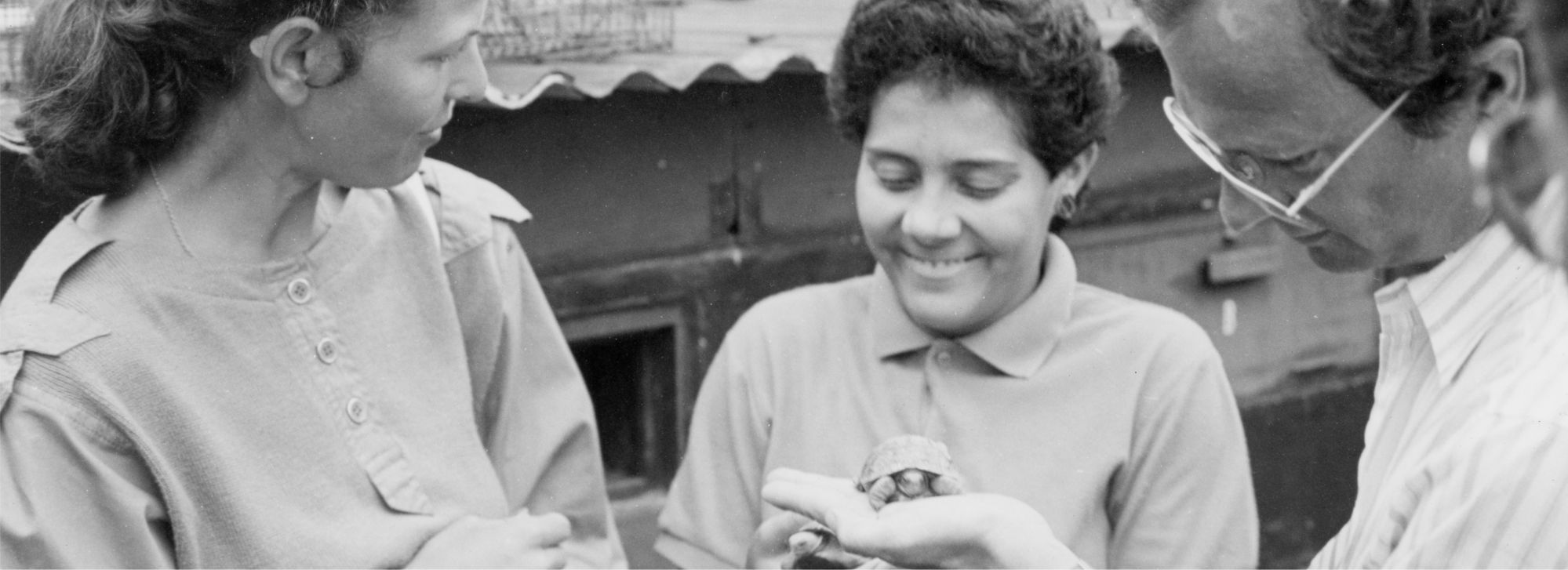Feminine presence in the islands
Women in Galapagos
The current global society is reviewing its discourses, its ways of looking at and understanding reality, and its mechanisms for interacting with it. It is abandoning discrimination and recovering processes, changing attitudes and visiting other paths. The archaic invisibility of women, for example, is beginning to be eliminated, and their stories and achievements are on the mend.
Up to mid-20th century, women were mostly unrecognized as active agents in planning, developing and communicating scientific endeavour — or any other kind of professional activity. Social limits, taboos and impositions prevented them from a number of activities and achievements, usually reserved to men. However, many of them built bridges over those gaps and surpassed all kind of frontiers, becoming the pioneers for a new generation of female scientists.
For much of their history, the Galapagos Islands represented a sort of outpost lost in the Southern Seas: a land for Robinsons and adventurers. Women were not strange in the islands — they were among the first colonists, bringing new life and keeping stories and memories alive. But within the scientific, academic and professional scenario, they were not so well represented. From the very beginning of the science-related activities in the Galapagos archipelago, female names seemed to be scarce in the expeditions and field trips, and on the documents giving account of them.
Nonetheless, women participated in those expeditions.
Among the first of them was Rosamond Georgina Lloyd Taylor. Georgina traveled to the islands and stayed on Indefatigable / Santa Cruz in the winter of 1938-9. She wrote a Diary, currently kept in the Library, Archive and Museum of the Charles Darwin Foundation (CDF), where she described both the nature and people from Galapagos, and the experience of being part of a scarcely funded, early scientific expedition.
From that point on, many other names can be added to the list — including the ones of the scientists currently working at the Charles Darwin Research Station (CDRS). Many of them have spent a lifetime researching and protecting Galapagos' biodiversity, and have produced an incredible amount of academic literature. They were and are the continuation of the work of pioneers such as Ruth Rose, of the Noma expedition (1923), which produced the emblematic book Galapagos: World's End. Or the Norwegian Borghild Rorud, from the University of Oslo, who came to Santa Cruz in 1926, and in whose honor was baptized the tree Acacia rorudiana.
But they were more than scientists. Most artists working in Galapagos were talented women, whose work was crucial to describe biological specimens. They draw and painted the islands' natural world with all its many details. Among them, Sara Santacruz is possibly the best-known name, but there are many others: Katie Davis, Antonia Phillips, Kay Dodge, Katherine Erbaugh...
Female photographers, musicians, and writers arrived from all around the world also worked in the archipelago, capturing aspects of Galapagos' reality that cannot be apprehended by science. In this sense, Tui de Roy, daughter of Belgian pioneers and raised in the islands, has created an outstanding visual universe through the lenses of her cameras.
There were those who managed the islands' knowledge and memory, including most librarians, archivists, and other professionals taking care of the CDF's valuable collections. Among them, Gayle Davis deserves a special place for her commitment, her wide range of interests, and her many achievements.
There were travelers, whose written accounts helped to build the Galapagoan history. Like Paulette Everard de Rendón, who visited the archipelago in 1940 and wrote down her experience in a book titled Las últimas islas encantadas. Or Edith Strout, the wife of Dr. R. S. Strout, who visited Santa Cruz in 1934 aboard the Igdrasil; Edith was probably the first woman to climb Los Gemelos.
Conservationists, politicians, advocates, decision-makers: women left a deep footprint in the rocky islands. One that, nowadays, cannot be ignored or hidden anymore. To acknowledge them means to open new horizons within our understanding of history, from women's perspective.
And to widen our awareness about female characters who made and continue to make science and life in the Encantadas.
[The photograph that illustrates this text is preserved in the CDF Archive. Solanda Rea appears in it showing the baby giant tortoises from Galapagos to the Duke and Duchess of Edinburgh, who visited the Charles Darwin Research Station in 1971].
References
Beebe, William (1988). Galapagos: World's End. New York: Dover Publications.
Rendón, Paulette E. (1947). Galápagos: Las últimas islas encantadas. Quito: Casa de la Cultura Ecuatoriana.
Text & picture: Edgardo Civallero (edgardo.civallero@fcdarwin.org.ec)
Publication date: 1 December 2021
Last update: 1 December 2021
